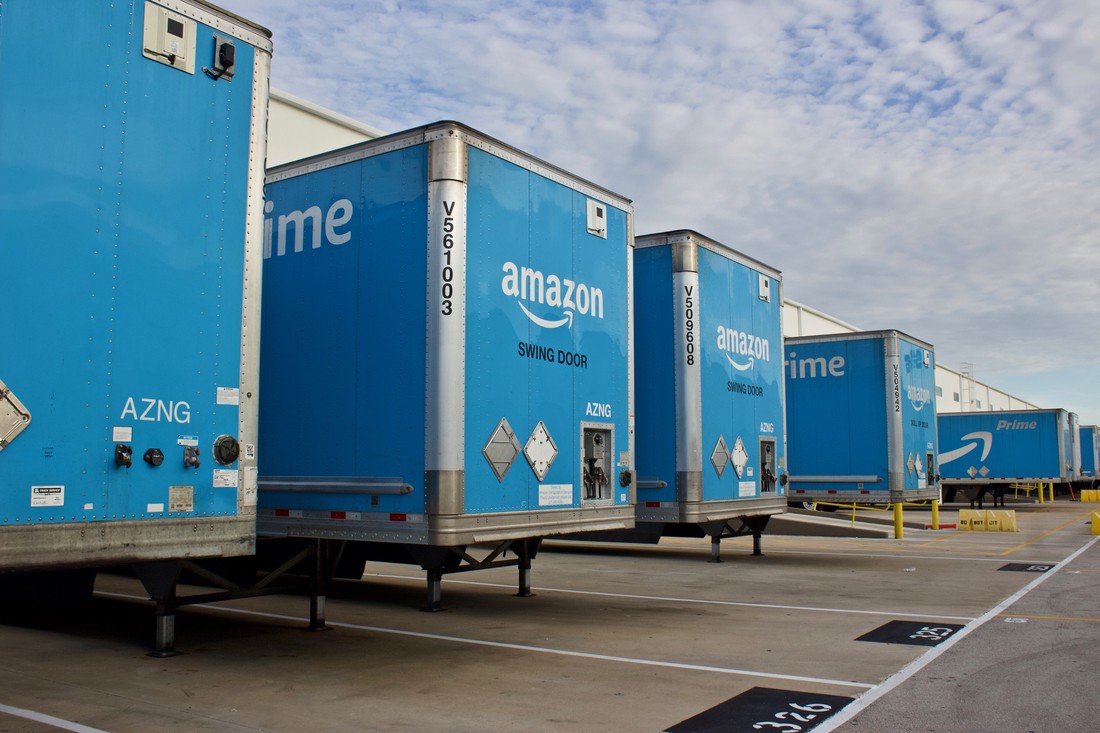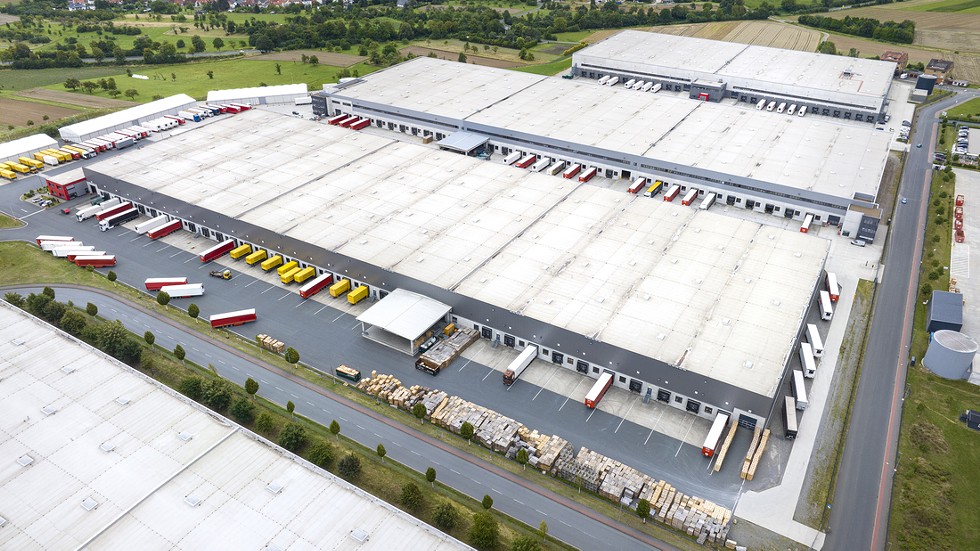It was at the first Town Council meeting of 2024 in Gardiner that two Plattekill residents took to the floor to ask councilmembers: “Are you folks aware of this mega-warehouse that’s proposed for your border?”
The 50.93-acre parcel that was purchased by Modena Developers LLC is zoned light industrial, so Plattekill’s Planning Board, the determining body, deemed the use as of right with special use permit, which allowed them to ask for public input, a traffic study, and require a zoning variance for the building height. Even though the project was large for a town with a population of 5,600—a 451,050-square-foot trucking terminal and warehouse facility with 75 tractor-trailer loading docks—it was the first Councilmember Michael Hartner had heard of it. “They were against it,” Hartner says of the Plattekill speakers, “and they were asking for Gardiner’s help to stop it.”
Hartner says a big concern was that the applicant’s traffic study estimated 200 trucks a day traveling on Route 44/55 between Modena (Route 32) and Gardiner (Route 208)—a hilly state road with limited sight-lines. Unlike a traditional warehouse used to store excess inventory with a few deliveries per day, mega-warehouses are meant to have waves of fulfillment that keep the flow-velocity high.
Both Hartner and Gardiner Town Supervisor Marybeth Majestic mentioned concerns about traffic, safety, and the town’s infrastructure. Some intersections on Route 44/55 don’t have the turn radius for an 18-wheeler, and trucks have gotten stuck. Other intersections have recently been deemed dangerous by the Ulster County Transportation Council. A nearby bridge has a 17-ton weight limit that would preclude its use by the warehouse. “Trafficwise, it would be a nightmare for all of Gardiner's residents,” says Majestic, “negatively affecting the quality of life for all of us.”
BIPOC Communities Disproportionality Affected
Earlier this year, the Environmental Defense Fund (EDF)—a research arm of the statewide ElectrifyNY coalition—announced their study’s finding that one in four New Yorkers live within half a mile of a mega-warehouse, including 457,000 people in the Hudson Valley, according to their analysis of relative Senate and Assembly districts. (A mega-warehouse is a building between 200,000 to over a million square feet designed for major regional distribution and storage centers. There are currently 2,400 leased warehouses in New York that are at least 50,000 square feet.)Because legacy local zoning codes don’t address the changing definition of warehouses, these high-traffic fulfillment centers for e-commerce are disproportionately clustered in communities of color and low income, with Black residents 101 percent more likely, Hispanic/Latino residents 66 percent more likely, and low-income residents 54 percent more likely to live within that half-mile range in the Hudson Valley. One problem with that is the truck-related pollution that’s associated with and generated by these warehouses.
EDF’s report focuses on nitrogen dioxide emissions, with reference to other pollutants like particle pollution from fine particulates, and sulfur dioxide. “What we find is that nitrogen dioxide pollution, which is one of the main pollutants released by trucks, contributes to large numbers of childhood asthma cases in areas across the country,” says Sam Becker, Project Manager for Global Clean Air at EDF.
And having asthma fundamentally changes a child's life—physically, emotionally, and academically. Asthma is the leading cause of missed school days and has been linked to diminished school performance. The report details that Black children are nearly nine times more likely to be hospitalized for asthma and five times more likely to die from it compared to non-Hispanic white children. With reports now released for Illinois and New Jersey, since New York’s, Becker says, “EDF is ultimately trying to understand how communities across the country are being impacted by the pollutants that they have no choice but to breathe, and to make the case that the status quo is one that needs to shift.”
The Last Mile
ElectrifyNY is a statewide coalition of environmental advocacy groups that have been leading the charge when it comes to passing what could be the first statewide antipollution rule for warehouses: the Clean Deliveries Act. They wrote the act in coalition, and have been sitting down with elected officials to win their support. Last month, the law was passed in the State Senate at the end of legislative session, co-sponsored by Senator Michael Gianaris of Queens (called the Amazon slayer for his work to dissuade the company from setting up HQ2 in Long Island City), and was making its way through committee in the State Assembly.

The Clean Deliveries Act is an effort to regulate emissions overall because, while point source pollution, such as from a smokestack or factory, is measured and regulated, emissions from mega-warehouses is from an aggregation of indirect sources (trucking activities concentrated in a relatively small area, similar to bus depots or airports), and that’s unregulated.
“And when I say unregulated, the status quo is such that we don’t even know where the facilities are, how many there are, which communities they’re impacting, or what their emissions are,” explains Alok Disa, Senior Research and Policy Analyst at Earthjustice—a public-interest litigation arm of ElectrifyNY. The act establishes an indirect-source review process to ensure this growing industry does its part to meet emissions standards and be compliant with climate law. And while Southern California has an indirect-source review process for one of its air-quality districts, New York could be the first to have one statewide.
Disa says the Clean Deliveries Act would plug massive regulatory holes related to measuring emissions from mega-warehouses. “Whereas right now, the situation seems to be the developers and mega-corporations dictate the terms, I think there should be a more collaborative and proactive approach to this giant industry because the impacts are so pronounced,” Disa says. “There should be a planned process where, if we're all going to participate in e-commerce and benefit from it, we all should shoulder some of the costs as well.”
Large-scale fulfillment centers are trying to address what’s known as the last-mile problem—that point in the supply chain where it becomes expensive and logistically challenging to deliver fast, free shipping. There's incentive, from a supply chain standpoint, to build more warehouses and to site them closer to where people live, to achieve those fulfillment times. “No one could have anticipated just how fast e-commerce blew up,” says Jaqi Cohen, the Director of Climate and Equity Policy for Tri-State Transportation Campaign—an advocate for decarbonization in the transportation sector within ElectrifyNY.
While e-commerce was already on the rise, the pandemic shifted buying habits in a profound way. “And so we've seen a massive increase of online purchasing, and that means a massive increase of same-day, door-to-door deliveries to people's homes, 24 hours a day, seven days a week. And the Clean Deliveries Act came out of the demands of community members who are impacted by that, particularly in Red Hook, Brooklyn.”
“No one thought in 2007 there would be a need for all these warehouses.” Everywhere you drive, you see FedEx, Amazon, and UPS trucks; it’s the life we’re having now.” —Richard Gorres, Chair of the Plattekill Planning Board
tweet this
Cohen says there are many ways to tackle the issue, from choosing the sustainable shipping option (grouping items into one shipment and not choosing same- or next-day delivery when buying online) to phasing in expectations that the shipping industry invest in clean energy technologies or newer models of goods movement. “We're not saying that fleets have to be zero emission the day after the bill is passed; there will be a phase-in period. But this is where the industry is headed, and this is where the transportation sector as a whole is headed.”
In addition to better transparency about mega-warehouse permitting, siting, and ownership, the bill would create an emissions-reduction plan requiring warehouse operators to implement one or more of the following: acquiring zero-emission vehicles and charging infrastructure, installing solar panels and/or batteries on-site, considering alternative transportation modes for incoming or outgoing trips where appropriate and with on-site worker input, or paying fees. It would apply to both new and existing mega-warehouses, and would enable a facility-by-facility review to create an opportunity for public scrutiny, so the needs of the freighting system can be assessed holistically along with how to manage the demand. “We're seeing these facilities pop up closer and closer to people's homes and into communities where maybe they thought they would never be built,” Cohen says, “and so people are calling their legislators and they're worried about what this means for their health and their livelihoods.”

For opponents of the mega-warehouse proposed for Route 44/55, there’s frustration about the lack of clarity around the project. They say that even though the traffic study speculated the number of vehicles involved, the developer has not identified who the tenant of the building would be or what they would be storing there, which makes it hard to assess the impact. Even Richard Gorres, Plattekill’s Chair of the Planning Board doesn’t know. Though they’ve been asked, the applicant has been vague about who will use the facility, and it’s a question they’re not required to answer.
The siting of mega-warehouses is subject to local laws, and the regulations around industrial zoning can allow for development to occur without special permit or public input or even traffic studies. Environmental advocates say polluting industries tend to exploit a community's need for jobs and lack of political capital.
Gardiner put together a committee of various experts who went through the SEQRA (State Environmental Quality Review Act) application line by line, divvying up research items. The committee concluded the project would have extensive environmental impacts and submitted a 75-page letter requesting Plattekill’s Planning Board make a positive declaration on SEQRA, to trigger additional review. And it worked; the proposal is now in what Gorres calls “a stalled process” while the developers voluntarily conduct seven to eight studies before another public hearing is held and the Planning Board makes its declaration.
Plattekill’s zoning code was last updated in the aughts, but Gorres says, “No one thought in 2007 there would be a need for all these warehouses.” Gorres works at a warehouse, and he says if you take a ride around Montgomery and Maybrook, it’s nothing but warehouses. “Everywhere you drive, you see FedEx, Amazon, and UPS trucks; it’s the life we’re having now.”














